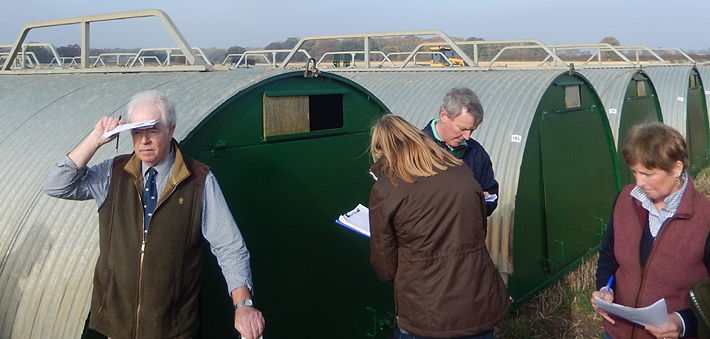Although the recent heatwave may be waving goodbye fairly soon, it has played havoc with pig producers throughout the country and also jacked up feed costs well ahead of producers’ COP levels. Although the latest SPP only eased by 0.13p to 150.34p, the general outlook paints a much bleaker picture than this.
Weekly contribution prices seem to be in retreat, easing in places, but very few extra pigs seem to be wanted by spot buyers and where they were prices, below 150p were the norm.
Looking ahead, UK pig numbers are likely to be hard hit by the effects of the heatwave on fertility and mortality but for the time being supply seems to be exceeding demand and further drops in pig prices in the weeks ahead may be on the cards.
The picture is much the same on a global basis with the influential German producer price easing by another two cents to stand at €1.39, which is equivalent to 123p in our money.
However, with sky rocketing feed prices many producers are now operating at a loss and possibly wishing they had heeded earlier warnings to plan more forward buying of feed ingredients but as we all know hindsight is a wonderful thing!
Unfortunately, the currency markets have not done our industry any favours with a stronger pound hitting cull values which have gone down by another penny and are now in the 60-64p bracket, with the Euro trading on Friday worth 88.08p compared with 89.35p a week earlier.
With straw prices on fire (in every sense of the word) pig finishing costs are set to soar and weaner prices are remaining under pressure and although the latest AHDB 30kg average of £55.39 moved up a touch, 7kg prices have continued to slip and now stand at £39.03, but most of this data relates to contract rather than spot weaner prices and it is difficult to find customers for Red Tractor one off loads of weaners.
Grain prices are heading north at an alarming rate with London wheat traded for November delivery at £184.55/t and report of barley being traded between February and July next year at £186/t. The writing seems to be on the wall as far as compound prices are concerned with dry sow rations forecast to be costing around £225/t in the months ahead and lactating sow rations up £250/t.
Farm to farm trades of feed wheat between July and November have been in the £172.50-£180/t range mainly due to the dry growing conditions in the northern hemisphere.
UK grain futures prices are now at their highest level since 2013, and it is just a pity the same cannot be said of pig prices! UK protein prices are also continuing to rise with 48% soya ex Liverpool traded in late July at £343/t although rape seed values have fallen back a touch to £208/t.
And finally, looking ahead on a glass half full/half empty basis, because of the recent hot weather there is no doubt that UK pig numbers will suffer in the autumn and winter from infertility, high mortality and everything else that goes with too much heat.
This might possibly help to lift prices to some extent, but the reverse also applies which is that producers incomes will be hit by having fewer pigs to sell at a time when every penny is needed with global pig prices being under tremendous pressure, and especially with reports that the US has over 1m tonnes of beef and pork in cold store and this pattern has been repeated in other parts of the world with supply outstripping demand.




